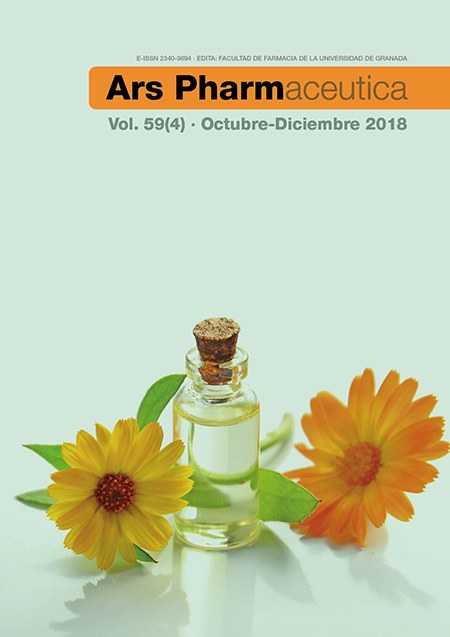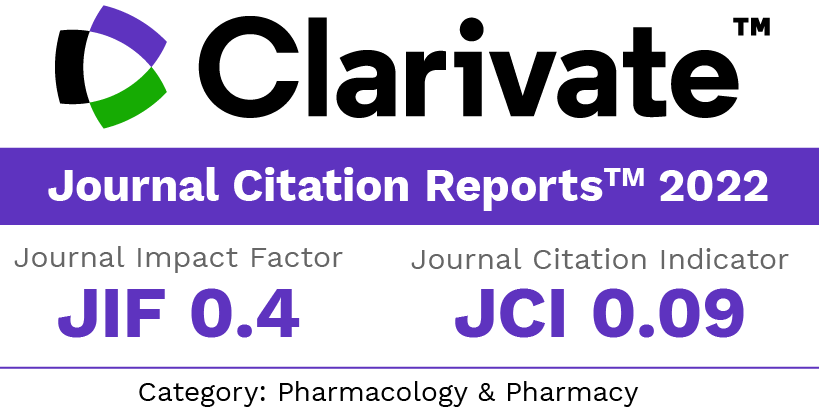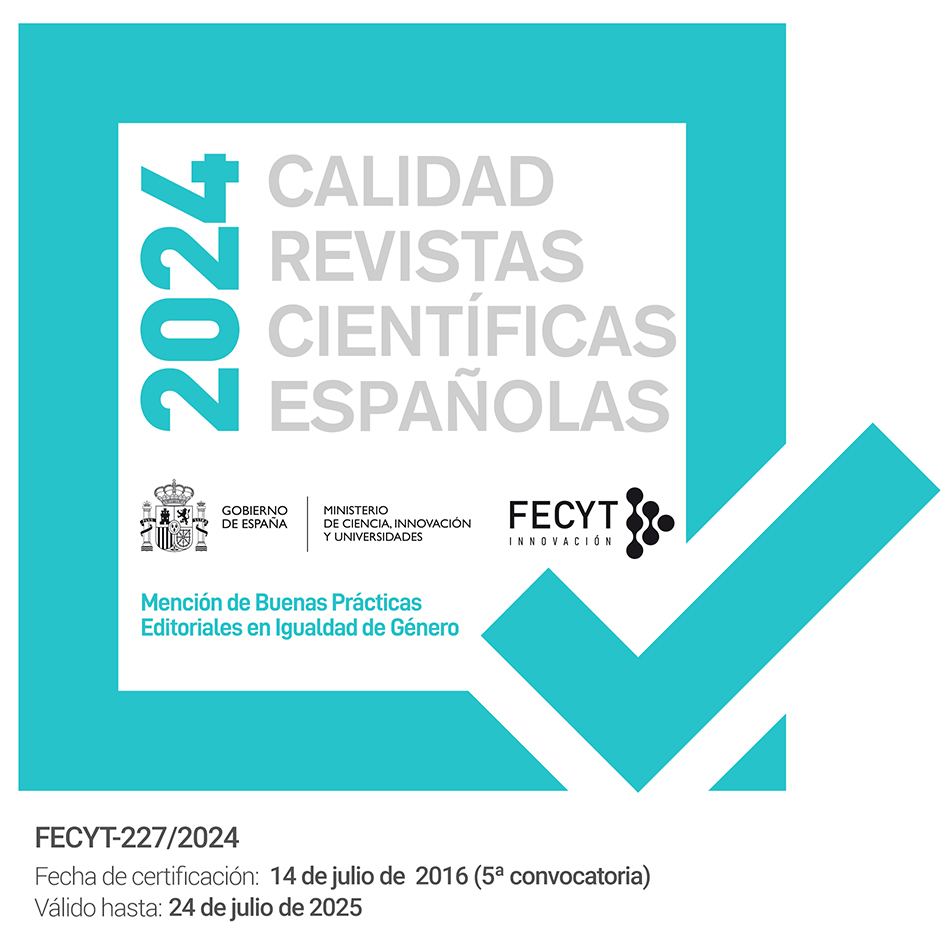Characterization of a jelly of Calendula officinalis L. at 1% for stomatological use
DOI:
https://doi.org/10.30827/ars.v59i4.7462Keywords:
Calendula officinalis L., jellies, quality control, sensory evaluationAbstract
Introduction: Calendula officinalis L. is one of the plant species most used in the treatment of periodontal diseases.
Objective: To determine preliminarily the quality parameters of Calendula officinalis L. jelly at 1% for stomatological use.
Methods: 18 formulations were prepared using carboxymethylcellulose (CMC) and hydroxypropylmethylcellulose (HPMC) as the gelling agent, using the incorporation method. The quality parameters were determined selecting the four formulations with better technological parameters to evaluate sensory acceptance by a committee of experts.
Results: The HPMC formulations presented better organoleptic characteristics and acceptable pH for its application on the buccal mucosa; as well as an area of optimal extensibility, which allowed them to be selected to carry out the sensory analysis.
Conclusion: The quality parameters of the Calendula officinalis L. 1% jelly were preliminarily established the formulation encoded as HPMC 6 is selected for presenting characteristic odor to the soft extract, amber color subdued, homogeneous and glossy, pleasant taste, no lumps or grit, area of extensibility of 66.96 ± 0.91cm2, pH of 4.9 and greater sensory acceptability.
Downloads
References
El Desafío de las Enfermedades Bucodentales – Una llamada a la acción global. Atlas de Salud Bucodental. 2ª ed. Ginebra: Federación Dental Internacional (FDI); 2015. 121p.
Carranza FA, Sznajder NG. Compendio de Periodoncia. 5ª ed. Buenos Aires: Editorial Médica Panamericana; 1996.
Domínguez RP, Lancha MP. Tratamiento de la Estomatitis subprótesis en atletas y ex atletas con propomiel y nistatina. Rev Cub Med Dep & Cul Fís. 2011;6(3).
Fiallo VRF, Hernández CML, Reyes M, Jorrín GM, Borrego JCA, Ferradá CAR. Comparación entre 2 cultivares de Calendula officinalis L. Rev Cubana Plant Med. 2000;5(1):14-16.
Roig J. Plantas medicinales, aromáticas o venenosas de Cuba. 1ª ed. La Habana: Editorial Científico Técnica; 1974. 949 p.
Arora D, Rani A, Sharma A. A review on phytochemistry and ethnopharmacological aspects of genus Calendula. Pharmacognosy Reviews. 2013;7(14):179-187. doi:10.4103/0973-7847.120520
Mercado LF, Herrera AH, Caballero AD. Enjuagues de Calendula officinalis como alternativa de los antisépticos orales. Revista Cubana de Estomatología. 2013;50(4):436-442.
Kaur J, Sidhu S, Khan MU. In vitro antioxidant and anti-inflammatory activity of Calendula officinalis and Mimosa pudica. World Journal of Pharmacy and Pharmaceutical Sciences. 2016;5(2):1388-1397.
Efstratiou E, Hussain AI, Nigam PS, et al. Antimicrobial activity of Calendula officinalis petal extracts against fungi, as well as Gram-negative and Gram-positive clinical pathogens. Complementary Therapies in Clinical Practice. 2012;18(3): 173-176. doi:10.1016/j.ctcp.2012.02.003
Shikov A, Pozharitskaya O, Makarov VG, et al. Medicinal Plants of the Russian Pharmacopoeia; their history and applications. Journal of Ethnopharmacology. 2014;154(3):481-536. doi:10.1016/j.jep.2014.04.007
Ruiz EF, Peláez MC, Lapiedra RC, Gómez GE, López LM. Efectos del consumo de alcohol etílico en la cavidad oral: Relación con el cáncer oral. Med Oral. 2004;9:14-23.
Salañer AL, Burguesa AC. Efecto de los colutorios con contenido alcohólico: revisión de la literatura. RCOE. 2005;10(4):407-412.
Ministerio de Salud Pública de la República de Cuba (MINSAP). Guía Metodológica para la investigación de Plantas Medicinales. La Habana: Editorial Pueblo y Educación; 1997.
Sosa-Rosales MC, Garrigó MI, Sardiña S, et al. Guías prácticas de Estomatología. La Habana: Editorial Ciencias Médicas; 2003. 564p.
Ugarte R. Tecnología de la producción de preparados farmacéuticos semisólidos. La Habana: Editorial Científico-técnica; 1975. 208 p.
Ministerio de Salud Pública de la República de Cuba (MINSAP). Regulación No. 16-2012. Directrices sobre buenas prácticas de fabricación de productos farmacéuticos. La Habana; 2012.
NC 90-13-13. Aseguramiento metrológico. Medidores de pH. Reglas generales para efectuar mediciones de pH. La Habana; 2008.
Pérez T, Rodríguez Y, Morales I, Soler DM. Comportamiento reológico y extensibilidad de una formulación semisólida a partir del extracto acuoso de Rhizophora mangle L. Tecnol. Ciencia Ed. (IMIQ). 2011;26(2):75-79.
Hernández E. Evaluación sensorial: curso tecnología de cereales y oleaginosas Guía didáctica. Facultad de ciencias básicas e ingeniería. BOGOTA, D.C; 2005. 128 p.
Jato JV. Tecnología Farmacéutica. Formas Farmacéuticas. Madrid, Editorial Síntesis España.1997. 591 p.
Downloads
Published
How to Cite
Issue
Section
License
Copyright (c) 2018 Daily Arias Ramos, J Cancañon Cadiz, I Chil Núñez, JC Escalona Arranz, A Cañada Rodríguez

This work is licensed under a Creative Commons Attribution-NonCommercial-ShareAlike 4.0 International License.
The articles, which are published in this journal, are subject to the following terms in relation to the rights of patrimonial or exploitation:
- The authors will keep their copyright and guarantee to the journal the right of first publication of their work, which will be distributed with a Creative Commons BY-NC-SA 4.0 license that allows third parties to reuse the work whenever its author, quote the original source and do not make commercial use of it.
b. The authors may adopt other non-exclusive licensing agreements for the distribution of the published version of the work (e.g., deposit it in an institutional telematic file or publish it in a monographic volume) provided that the original source of its publication is indicated.
c. Authors are allowed and advised to disseminate their work through the Internet (e.g. in institutional repositories or on their website) before and during the submission process, which can produce interesting exchanges and increase citations of the published work. (See The effect of open access).























